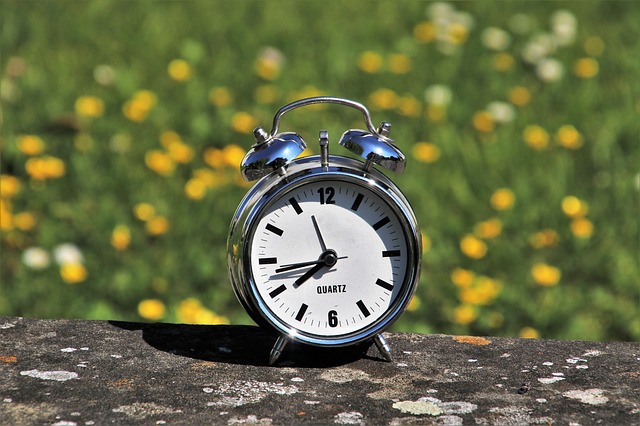
Currently, federal law sets standard time zones for each area of the country. Current law also establishes Daylight Saving Time when the time of each zone moves forward by one hour in early March, when we Spring Forward, to early November, when we Fall Back.
During Daylight Saving Time, the sunrises and sunsets happen one hour later. Think of those long glorious days of summer, and then in November we “fall back” to go back to standard time. The purpose of this is to shift an extra useful hour of sunlight from the morning to the early evening.
Historically people don’t want to wake up an hour earlier to use that extra hour of morning sunlight that naturally occurs in the summer months. Daylight Saving Time shifts that extra hour of sun to the end of the day. It is thought that having the extra hour of light in the evening prevents traffic accidents and saves energy – as there’s more natural light at the end of the day, and people are out doing things instead of cocooning at home.
Federal law currently lets states choose to stay on standard time all year long, but prevents states from having year-round Daylight Saving Time. If Prop 7 passes, we would see no immediate effects. The proposition allows state lawmakers to vote on whether to change Daylight Saving Time, but no year-round Daylight Saving Time could happen until Federal law allows it.
What would staying in the state of daylight saving time look like?
Our summers would look the same. The change would happen in winter, where we would not “fall back.”
In the winter, it will be dark at 6:00 pm rather than 5:00 pm (which is about to happen next week after “Fall Back” on Sunday, November 4th).
What’s the best for us?
Getting rid of daylight savings time would mean that the sun would rise in the summer at 5:30 am. Kids would be up early! *ahem* I should rephrase, they would be up even earlier! And then ready for bed earlier, as we would lose those bright summer nights.
If we stay on daylight saving time year round, our summers would be the same, but our winters would be adjusted to have a little more light at the end of the day but the mornings would be dark until close to 8:30 am.
To start your day to darkness is very hard. Melatonin, the hormone that tells your body it is time to sleep, is inhibited by light. Meaning the sun coming up in the morning suppresses melatonin and your body wakes up.
Conversely, the sun setting at the end of the day allows melatonin to surge, telling your body it’s time to sleep.
In addition, sunlight also tells your body to release cortisol which gives you a surge of energy to wake up.
And this is why during the long summer nights, it’s hard to get your kids in bed at a decent hour when it’s still light out. This also explains why you seem to go to bed earlier in the winter time when it’s darker earlier.
So what is best for our kids?
The advantage of daylight saving time in the winter is smaller than in the summer and that’s why we “fall back” to standard time.
In the winter months, we see almost four hours less of sunshine. December 21st, the shortest day of the year, sees four hours less sunlight than the June solstice.
After reviewing the evidence for and against the information, and having the perspective of a parent, I think the way things are currently is the best schedule for our children.
Staying on standard time would have kids waking very, very early in the summer, and, really, they wake up earlier enough already.
Not “falling back” for winter will have us waking up in darkness and not seeing sun until 8:30 am. This would be really hard to get school-aged kids up and going for the morning, not to mention teenagers who already have a shifted circadian rhythm with later wake times due to puberty.
To sum it all up…
Prop 7 is asking if you would like daylight saving time to be controlled by your state instead of the nation. It actually isn’t asking you how you feel one way or the other about daylight saving time. But if you want your kids to rise with the sun around 6-7 am, and not 5 am or 8 am, then staying with the status quo is the way to go.

















